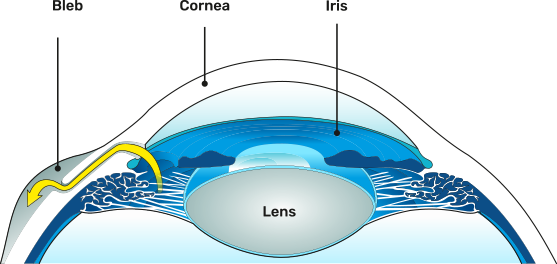- Academia
- For Corporate
- Cashless Facilities
- Media
- Donate
#NoCompromise
- 020 6609 9888 | +91 9168013322
#NoCompromise
Eye drops are generally the first line of management for glaucoma. There are around 4-5 different types of anti-glaucoma eye drops. All of them work towards reducing the eye pressure by reducing fluid production or by increasing the outflow.
Depending on the eye pressure and the severity of glaucoma, your doctor may recommend one or more eye drops, which need to be used at a fixed frequency. If the pressure is not adequately controlled, one or more eye drops are added to achieve the target pressure.
In some cases, oral medications may also be recommended along with eye drops.
A few people may experience side effects of medications, like eye irritation. In some conditions, eye medications may also not be suitable. Your doctor will discuss your medication, and monitor the effects on a regular basis.
Important information for glaucoma patients and relatives:
Your doctor may recommend laser treatment for better outcomes in controlling eye pressure. A laser is a beam of highly focused light. In glaucoma treatment, a laser is aimed at specific parts of the eye to open up drainage paths for fluid to flow out of the eye and relieve the eye pressure.
Laser treatment is safe, fast and largely painless. The doctor will numb your eyes before treatment. You might notice a slight sting or burn.
Laser treatments may cause temporary postoperative effects including inflammation and blurred vision, which will eventually disappear. Your doctor will prescribe medication to reduce symptoms. It may take a few weeks to see the full result of laser treatments.
When it’s used
This procedure is the principal treatment for narrow-angle closure glaucoma. It is also a preventive measure against angle closure attacks, in which pressure suddenly builds in the eye.
How it works
Laser Iridotomy uses a focused beam of light to create a very small hole on the outer edge of the iris. This opening functions as an alternative drainage system to allow the outflow of fluid from the eye, bypassing the normal route.
A non-incisional diode laser is used to destroy the ciliary body, which produces the clear fluid of the eye, and lower the eye pressure. It is typically used to settle previous multiple failed glaucoma surgeries with limited visual potential or to provide pain relief in a blind painful eye. In this procedure a probe is placed on the surface of the eye and laser energy is delivered at multiple spots.
Surgery isn’t usually the first step to treat glaucoma, but it may save your eyesight if other treatments don’t work. Your doctor will discuss which type of surgery they recommend, as well as any risks and benefits before you decide whether to go ahead.
When it’s used
MIGS is recommended for individuals with mild to moderate glaucoma. It can also be used in specific cases where other treatments are not effective, or there are adverse reactions to certain medications.
MIGS has revolutionised glaucoma management with minimal tissue trauma, good post-operative recovery, and improved patient satisfaction.
How it works
The surgery is aimed at reducing eye pressure either through the existing drainage system of the eye or by creating alternative drainage pathways. During this procedure, a tiny tube or stent (known as iStent) is inserted into the eye. Alternatively, excess tissue can be removed using specialised techniques like the Bent Ab-interno Needle Goniectomy(BANG) or the Kahook Dual Blade, allowing the fluid inside the eye to flow out smoothly. Your doctor will explain which modality is best suited for your condition.
When it is used
This surgery is done when eye drops cannot control the eye pressure or when the glaucoma is in an advanced stage.

How it works
An alternative passage is created for the fluid outflow. A small hole is made in the wall of the eye, which is guarded by a flap that acts as a trapdoor. The fluid is shunted from inside the eye in a controlled fashion, which forms a small ‘bleb’ underneath the upper lid and lowers the Intraocular eye pressure. If there is an associated cataract, a combined cataract + glaucoma surgery called a Phacotrabeculectomy can be performed.
In trabeculectomy, a flap is first created in the sclera (the white part of the eye). Then a small opening is made into the eye to release fluid from the eye.
When it is used
This surgery is generally reserved for patients in whom the conventional trabeculectomy surgery has not worked and some types of complex secondary glaucomas.
How it works
The commonly used implants are the Ahmed valve implant and the AADI implant. They are made of silicon polypropylene. The implant is shaped like a miniature computer mouse with a tube that enters the eye while the rest of the implant sits on the surface of the eye, under the conjunctiva and covered by the upper eyelid.

©2023-K K Eye Institute | All Rights Reserved
Home | About Us | Specialities | Careers |
Connect | Academia | For Corporate | Cashless Facilities | Media | Donate
Best Eye Hospital | Treatments | Cataract |
Cornea | Diabetic Retinopathy | Glaucoma | LASIK
Cosmetic Eye Surgery | Retina | Children’s Eye Care | Digital Eye Strain | Patient Resources | About Us | Careers | Contact Us
Support | Privacy Policy | Terms of Use